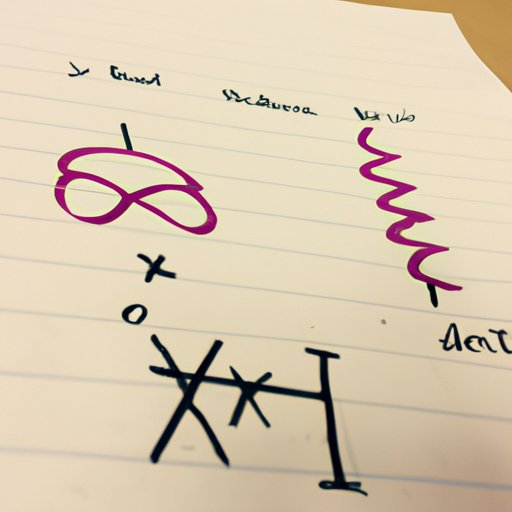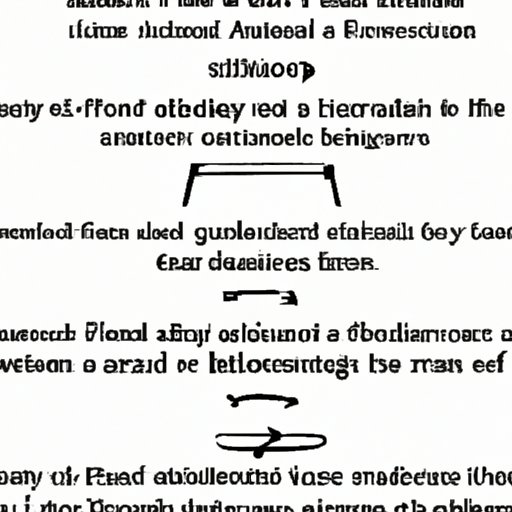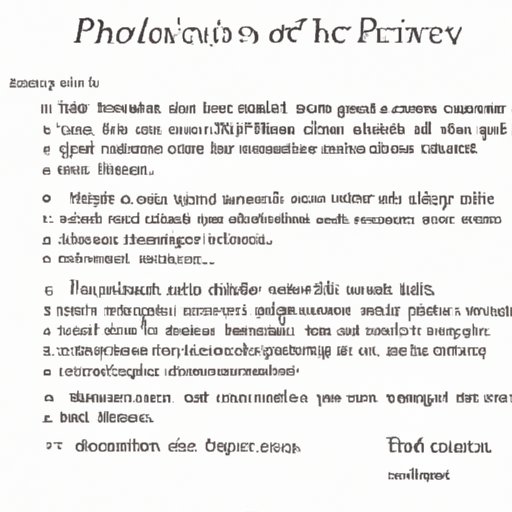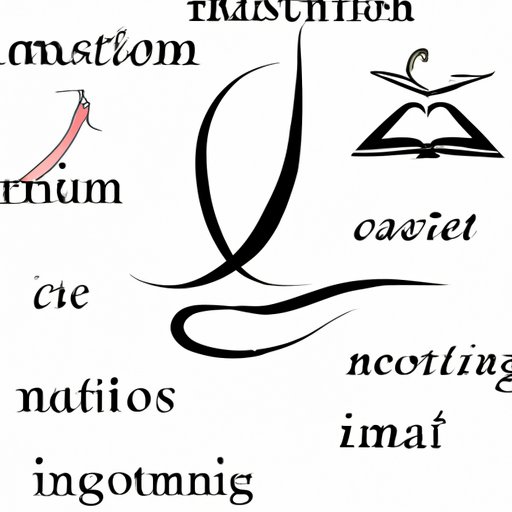Introduction
Symbolism is a powerful literary tool that authors use to convey abstract ideas and emotions in an imaginative way. Through the use of symbols, writers are able to express complex and nuanced concepts that would otherwise be difficult to communicate. This article will explore the role of symbolism in writing and examine the benefits, meaning and power of symbols. It will look at different types of symbols, their meanings and how they can be used to evoke emotion, create depth and complexity, establish tone and advance plot.

Exploring the Meaning Behind Symbols in Writing
Symbols are objects, images or actions that represent something else. They can be literal, such as a rose representing love, or more abstract, such as a sunset symbolizing hope. Symbols can also be used to represent abstract concepts, such as death being represented by a raven or darkness being represented by a black cat. Authors often use symbols to help readers understand the deeper meaning behind a story or poem.
The use of symbols can also be used to evoke certain emotions in readers. For example, the image of a stormy sea can evoke feelings of fear and uncertainty, while the image of a bright sun can evoke feelings of joy and optimism. Writers can use symbols to convey a range of emotions, from happiness to despair, and everything in between.
Symbols can also be used to represent abstract ideas. For instance, a river can symbolize the passage of time or the cycle of life. A rainbow could symbolize hope or renewal, while a desert could symbolize desolation or loneliness. By understanding the symbolic meaning of these images, readers can gain a better understanding of the story or poem.
An In-Depth Look at How Symbolism Enhances Writing
Symbolism has the power to enhance a story or poem in a number of ways. By using symbols, authors can create depth and complexity in their work. Symbols can be used to convey multiple levels of meaning and provide readers with a deeper understanding of the story or poem.
Symbolism can also be used to evoke imagery and enhance mood. For example, the use of symbols such as fire or lightning can create a sense of danger and foreboding, while symbols such as flowers or birds can create a feeling of peace and tranquility. By using symbols to create a vivid mental image, authors can draw readers into the world of the story or poem.
Finally, authors can use symbolism to develop themes in their work. By using symbols to represent ideas such as love, death, or justice, authors can explore these concepts in greater detail and provide readers with a richer understanding of the story or poem.
Unlocking the Power of Symbols in Literature
Symbolism has been used for centuries in literature to create subtext and add layers of meaning to stories and poems. As readers, we can look for symbols to gain insight into the author’s intentions and uncover the true meaning of the work.
For example, in William Shakespeare’s play Romeo and Juliet, the Montague family crest is a pair of crossed hands holding a torch. This symbolizes the passionate love shared by the two lovers, but also the tragedy of their doomed romance. By understanding the symbolic meaning of this image, readers can gain a better understanding of the play and its themes.
In addition to creating subtext, symbols can also be used to develop characters and advance plot. In J.R.R. Tolkien’s The Lord of the Rings, the One Ring serves as a symbol of power and corruption. As the ring passes from character to character, it reveals their inner motivations and drives the story forward. By understanding the symbolic meaning of the ring, readers can gain a greater appreciation for the characters and their decisions.

Understanding the Role of Symbols in Fiction Writing
Symbols can also be used to create atmosphere and establish tone in fiction. By using symbols to represent ideas such as fear, dread, or hope, authors can create a sense of suspense or anticipation in their work. Symbols can also be used to evoke a specific setting or time period, helping to transport readers to another world.
In addition, symbols can be used to advance plot and create conflict. For example, in Harper Lee’s To Kill a Mockingbird, the symbol of a mad dog represents the racism and prejudice in the town. This symbol becomes increasingly important as the plot progresses, leading to a dramatic climax.

Analyzing the Use of Symbolism in Poetry
Symbolism can also be used in poetry to create metaphor and simile. By using symbols to represent abstract ideas, authors can compare two seemingly unrelated objects and draw connections between them. For example, in Robert Frost’s famous poem “The Road Not Taken,” the speaker uses the symbol of a fork in the road to represent the choices he must make in life.
Symbolism can also be used to connect ideas in a poem. By using symbols to represent multiple concepts, authors can create a web of interconnected ideas that can lead to a deeper understanding of the poem. For example, in Emily Dickinson’s poem “I Heard a Fly Buzz When I Died,” the symbol of a fly is used to represent death and the afterlife.
Finally, symbols can also be used to enhance poetic devices such as rhythm and imagery. By using symbols to represent emotions or ideas, authors can create powerful visual images that can evoke a strong emotional response in readers.
Conclusion
Symbolism is a powerful tool that authors can use to convey abstract ideas and emotions in an imaginative way. By understanding the meaning behind symbols, writers can create depth and complexity in their work, evoke imagery and enhance mood, and develop themes. Symbolism can also be used to create subtext, develop characters, and advance plot. Finally, symbols can be used in poetry to create metaphor and simile, connect ideas, and enhance poetic devices.
This article has explored the role of symbolism in writing and examined the benefits, meaning and power of symbols. By understanding the symbolic meaning of images, readers can gain a better understanding of the story or poem and uncover the true meaning behind it.
Implications for Further Research
This article has provided an overview of the role of symbolism in writing and examined the benefits, meaning and power of symbols. Further research could focus on exploring specific examples of symbolism in literature and investigating the impact of symbols on reader interpretation and engagement. Additionally, research could be conducted to analyze the role of symbolism in other forms of art, such as film and music.
(Note: Is this article not meeting your expectations? Do you have knowledge or insights to share? Unlock new opportunities and expand your reach by joining our authors team. Click Registration to join us and share your expertise with our readers.)
